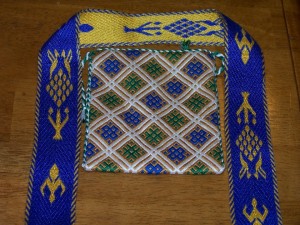One of my favourite Christmas songs is a dutch song that dates back to the middle ages. It was recorded in the Wettener Liederhandschrift in 1650 ( as recorded in the Dutch Song Database) and there’s a copy of the music at database – transcription. The words are simple:
Hoe leit dit kindeke
Hoe leit dit kindeke hier in de kou
Ziet eens hoe alle zijn ledekens beven.
Ziet eens hoe dat het weent en krijt van rouw!
Na, na, na, na, na, na, kindeke teer,
Ei zwijg toch stil, sus, sus! En krijt niet meer
Sa ras dan, herderkens komt naar de stal
Speelt een zoet liedeke voor dit teer lammeken
Het dunkt mij dat het nu haast slapen zal.
Na, na, na, na, na, na, kindeke teer,
Ei zwijg toch stil, sus, sus! En krijt niet meer
En gij, o engeltjes, komt ook hier bij
Zingt een motetteke voor uwen koning
Wilt hem vermaken met uw melodij.
Na, na, na, na, na, na, kindeke teer,
Ei zwijg toch stil, sus, sus! En krijt niet meer .
This is my translation of the lyrics, with an attempt to keep both the sense of the words and the scansion accurate (although I wasn’t able to maintain the rhyming scheme)
How lies this little child, here in the cold,
See here how all his little limbs shiver,
See here how that it wails and cries of sorrow,
Na na na na na na, little child dear,
Eh, hush now still, sus sus, en cry no more.
So quick then, shepherds young, come to the stall,
Play a sweet little song for this dear little lamb,
I think that it now will fall asleep soon.
Na na na na na na, little child dear,
Eh, hush now still, sus sus, en cry no more.
And thee, oh angels small, come too near by
Sing a motet so small for your king
Will him amuse here with your melody
Na na na na na na, little child dear,
Eh, hush now still, sus sus, en cry no more.
The song is a lullaby, sung to quieten a bitterly cold child. While the song was recorded in a book in 1650, the words suggest that the song is much older. The motet so small that the angels sing is a multi-part choral, and could have dated all the way back to the 13th century. The terms in the original for the shepherds, angels, and the motet all use the “-ken” ending, which refers to small or young things; as applied to the motet I think it indicates a small motet suitable for a young child.
This Christmas song is still sung today, and given its simple melody is often used as an early teaching song for students learning the recorder and the piano (which is where I first encountered it lo these many years ago).
For those who can read dutch, an interesting article written in 2010, arguing for the song being written in the fifteenth century, when the little ice age was in full flow. And on that note, I’m going to be diving into The Snowmen of 1511, which describes in academic detail the snow festivals of 1511.
